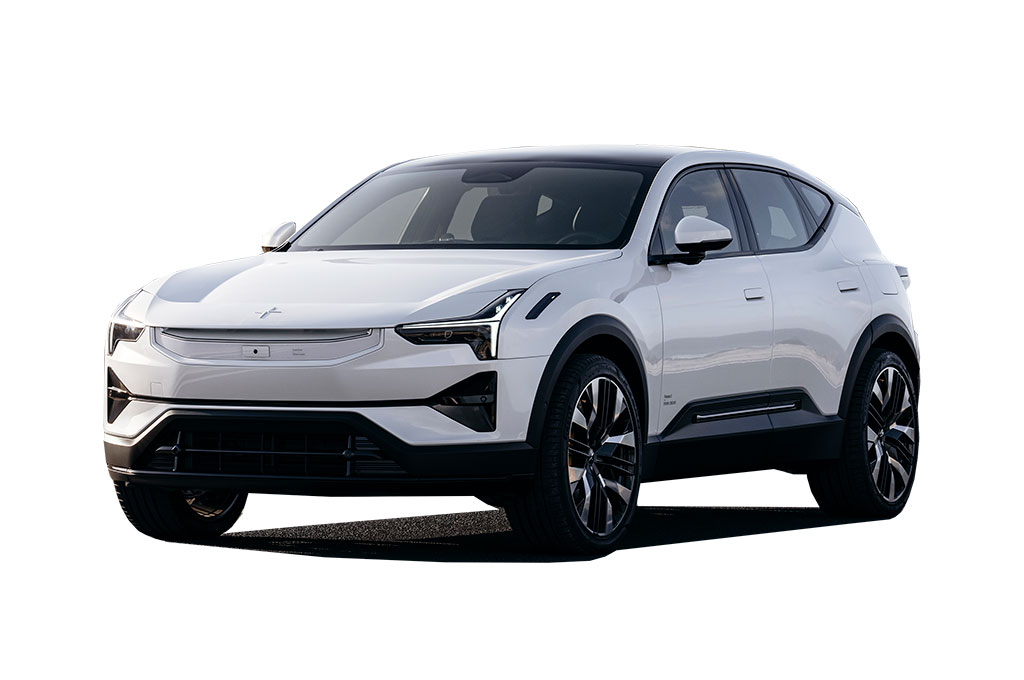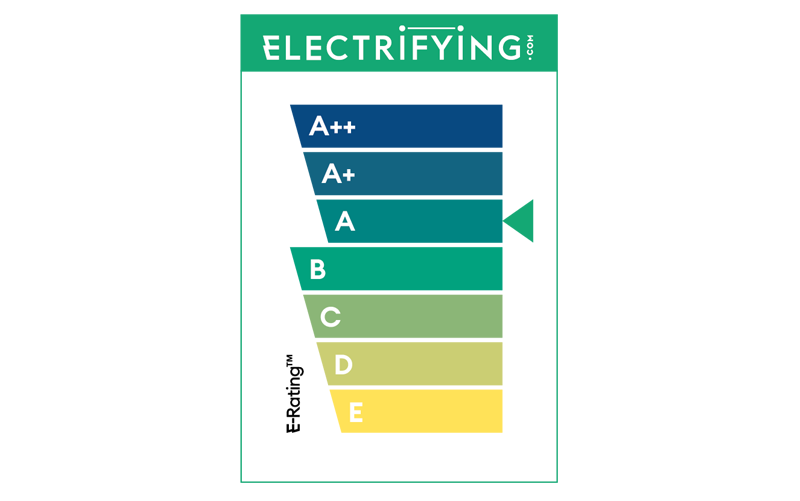Introduction & model history
What’s that saying about buses? You wait for ages and then two come at once?
That’s a bit like Polestar. The 2 has been around since 2020, quietly catering for people who would normally buy a Tesla Model 3, but they want a hatchback. Or don’t like Elon Musk.
Now at last we are getting some new Polestars, and first up is this – the 3.
First, let’s try and get our heads around Polestar’s naming system, which might take some getting used to. Instead of making the numbers of the cars correspond to the size, like BMW, or making letters that spell out smutty names when you get the range together like Tesla, Polestar has decided to number its cars in order of when they were launched. So the ultra-rare hybrid 1 was first, then the 2 and now this, the 3.
It's a big car – 4.9m long which is about the same as a Land Rover Discovery. But it’s only 1.6 metres tall, which is less than a Volkswagen ID.4. It makes the Polestar look very squished for an SUV – almost like a picture on your computer at the wrong setting.
In fact it’s sort of half way between an SUV and an estate car, which I kind of like.
Price – well it starts at £75,900 at the moment, at least until a single motor, long range version arrives later in 2024.
Range, Battery & Charging
As the stickers stuck on the door proudly proclaim, the Polestar 3 has an enormous 111KWh battery, which translates to 107kW of actually usable capacity. That makes it one of the biggest of any car currently on sale.
In the twin motor versions I tried that’s good enough for a range of 392 miles, which show reasonable efficiency for a car of this size. Opting for the Performance Pack hits that though, knocking 42 miles off the total. That’s quite a big drop for three tenths of a second off the 0-62mph time and some bling wheels.
Unlike the new Audi Q6 and Kia EV9, the Polestar uses 400v charging which you might expect to slow things down. However the peak DC rate is a very respectable 250kW, so a 10-80% takes half an hour.
It’s disappointing that the AC charging is only 11kW though. It seems a bit tight and will make a difference if you have access to faster three-phase power at home or public charge points.
Practicality & Boot Space
The 3 shares its platform with the new Volvo EX90, but unlike that car the Polestar is strictly a five seater with a surprisingly small boot. That means the occupants have been given much more room to stretch out and the space available is simply enormous. The only reason passengers could find to moan is that the floor is slightly higher than you’d find in a taller SUV or ICE-powered car.
You luggage might feel a little more cramped though. Open the boot and you’ll reveal a small opening and a surprisingly shallow space which is only fractionally larger a Volkswagen ID.3’s. There’s a deep space under the floor though which adds another 90 litres under the floor – enough for a week’s shop or a carry-on bag.
There’s also this clever button which can raise or lower the air suspension, making it easier to load heavy stuff in or hitch up a trailer. The 3 has got a 2.2 ton towing capacity too – which is really impressive if you’re a brave electric caravanner.
Interior, Design/Styling & Technology
Before I take a look at the inside properly, it’s worth talking about keys. Previous Polestar keys have been a bit crap (in the UK at least), so it’s nice to see you get a choice with the 3. You can use your phone, a Tesla-like card or an actual old fashioned blipper box.
Inside, it’s typically Scandi-cool, with an interesting selection of materials and high-tech. There’s a decent choice too, as you’d expect at this end of the market. You can have modern vinyls, wools, woods and even – shock/horror – leather. Although it’s not the most fashionable of materials, Polestar and its Scottish hide supplier argue that the cow skins would go to landfill if they’re not used, as our love of steaks and burgers feeds the supply.
The tech is driven by two screens. The first is directly in front of the driver and looks like a smartphone which has been stretched. Most of the information from here is duplicated on a Head Up Display, if you’ve paid for the optional Plus Pack.
Then there’s another 14.5 inch screen in the centre of the dashboard, which is fixed in a portrait position.
It uses Google software which is generally slick and easy to use, especially since there are shortcuts to apps fixed on the screen to make them easy to find, and these change while you are driving to reflect what you are likely to want in any situation. There are still some frustrations though, especially if you haven’t studied the instruction book in detail.
There are also a couple of areas of the interior which let down the quality feel, especially since they are parts you might touch every day. The wireless charge pad and cubby box latch in particular felt a little low-rent to me.
Motors, Performance & Handling
As the stickers on the door proudly proclaim, the 3 has either 489hp or 517hp if you stump up for the Performance Pack.
The 0-60 time isn’t mentioned in those stickers – possibly because it’s not actually that quick compared to rivals. Well, its 5 seconds or 4.7 if you pay the extra for the Performance pack. Now that is as fast as you’d ever really want in the real world, but won’t impress any Tesla owners.
The car I drove initially had the Performance Pack and it feels as fast as the figures suggest. It also rides and steers remarkably well for such a big car on huge wheels. Your rear seat passengers might disagree though - I was driven to the airport and it’s noticeably less comfortable over rough roads if you are a rear seat passenger, and it can become quite rumbly on rough roads. Even more reason to call shotgun.
If you are alone and want to have some fun, the Polestar uses some clever torque vectoring gizmo on the rear wheels to maximise traction and ensure the 3 gets around corners safely. Then, when you are taking it easier, the rear motor is disconnected entirely to improve efficiency.
The air suspension also helps out with the efficiency. It can raise or lower by 60mm to reduce high speed drag or give you extra clearance on rough roads.
The brakes have plenty of adjustment too, but lovers of regen modes will be disappointed to see that the selector is buried deep in a menu on the touchscreen.
The real surprise was the non-Performance model though. With its smaller wheels and less power it was a much nicer car to drive, with a more supple ride and less twitchy steering and accelerator responses.
Running Costs & Pricing
The 3’s £75,900 starting price will cause some eye-rolling among people who are looking for an affordable electric car, but it’s actually good value compared to German rivals such as the BMW iX, Audi Q8 e-tron and Mercedes EQE SUV. It’s closest rival in terms of price is the often forgotten Jaguar I-Pace.
There are inevitably upgrades if you want them and have deep pockets, and they are bundled together in packs. This means if you want a 360 degree camera (standard on a Nissan Micra) you have to choose a £2,300 Pilot Pack - which also has automatic parking and lane change assist - to get it.
In terms of efficiency, the Polestar makes good use of the energy you pour into the battery, which should keep running costs low. The initial lease costs are on the high side though – you’ll need to budget around £1,000 per month currently.
Verdict
Has the Polestar 3 been worth the wait, or would I rather get the bus? This crossover of estate and SUV means it’s more aerodynamic and brings efficiency improvements, but it also makes the 3 more engaging to drive as it has a lower centre of gravity. It’s really spacious too, especially in the back, and the quality is great.
It’s not as sharp to drive as the Q6 e-Tron or any of Porsche’s electric offerings, which makes the Performance Pack Polestar seem a little pointless. But the lesser model is a much sweeter drive and offers far more interior passenger space than it’s German rivals. That makes it a likeable car which has a place in the market.











-Snow,-Performance-Pack.jpg)
-Zinc-Nappa,-Black-Ash,-Performance-Pack.jpg)
.jpg)
.jpg)
.jpg)
.jpg)
.jpg)
.jpg)
.jpg)





 PV5_Cargo_Key visual image_2.png?width=300&height=185)


